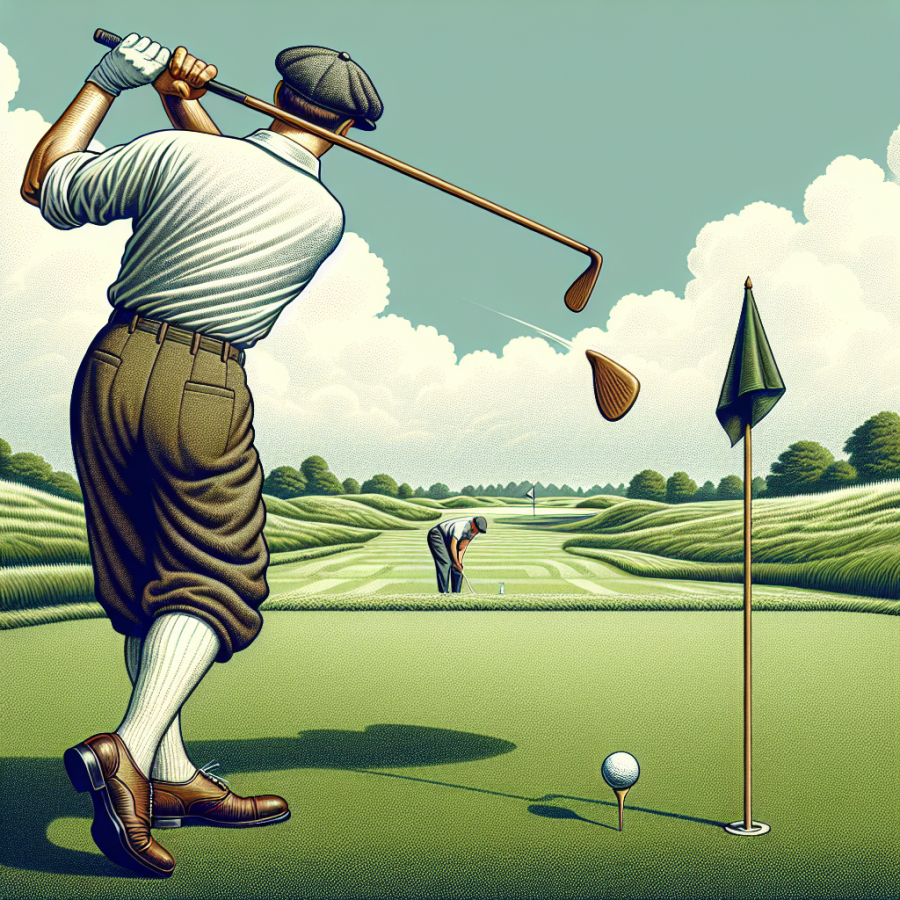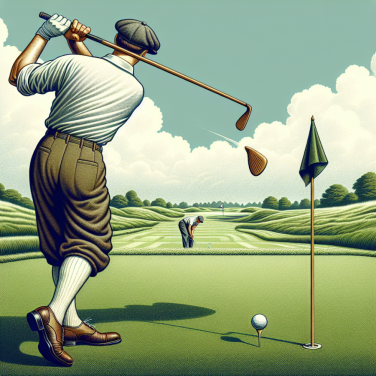Rediscovering the Roots: The Timeless Charm of Hickory Golf
Hickory golf brings us back to the days when the game was played in its purest form, with wooden shafted clubs and a slower, more deliberate pace. The reemergence of this vintage style of play has not only provided a historical throwback for golf enthusiasts but also reintroduced a level of skill and nuance that modern technology had seemingly surpassed.
One of the most compelling aspects of hickory golf is the equipment itself. Hickory shafted clubs are markedly different from their contemporary steel or graphite counterparts. Each club is unique, often hand-crafted with individual characteristics that affect the way it performs. This variability means that golfers must have a more intimate knowledge of their clubs, selecting them not just by number but by feel and the particular shot at hand.
Playing with hickory clubs also emphasizes the importance of shot-making. Modern clubs are forgiving and designed to hit the ball farther and straighter, minimizing the effects of a bad swing. Hickory clubs, by contrast, require a more refined swing, adherence to technique, and greater creativity. Golfers learn to shape their shots in ways that modern equipment rarely demands, adapting their approach to each unique situation—much like the early practitioners of the sport.
Adding to the allure of hickey golf is the emphasis on the game’s traditions. Dress code, for instance, often plays a part in hickory golf events, with participants donning period-appropriate attire such as plus-fours, argyle socks, and flat caps, which lends an air of authenticity and transports the players back in time.
Hickory golf courses also contribute to the experience. Many of these courses were designed in the early 20th century or even the late 19th century, and they have a natural, less-manicured aesthetic that aligns perfectly with the hickory era. Playing these courses as they were originally intended—without the benefit of modern equipment—challenges golfers in new ways and highlights the timeless design philosophies of great course architects of the past.
The strategic differences in playing with hickory clubs cannot be overstated. Modern golf often focuses on power and distance, but hickory golf revolves around strategy and placement. The reduced distance hickory clubs afford means players must plan their approach carefully, often considering the lay of the land more than they would with contemporary equipment.
Read also:
Roller Hockey: The Thrilling Blend of Speed and Skill
Hickory Sticks and Nostalgia: The Modern Revival of Classic Golf
Hickory Sticks and Nostalgia: The Modern Revival of Classic Golf
In an age where technological innovation dominates much of the modern game, a surprising trend has emerged: the resurgence of hickory golf. Enthusiasts from all over the globe have been trading in their titanium drivers and multi-material irons for a set of nostalgic hickory-shafted clubs, reminiscent of an era when golf was in its infancy.
The allure of hickory golf is multifaceted. For many, it’s about the connection to the history of the sport. Golf legends like Bobby Jones and Walter Hagen carved their legacies with these very tools, and wielding similar clubs offers a tangible link to that storied past. Playing with hickory sticks, golfers find themselves challenged in new ways as they adapt to the different feel and playing characteristics of the clubs. The hickory shafts provide a unique feedback that is less forgiving than modern equipment, demanding a more refined swing and a focus on technique and finesse over brute power.
The authenticity of the hickory experience is another draw. From the tactile sensation of the leather grips to the distinctive sound of the clubhead making contact with a gutta-percha ball, it's a full-sensory trip back in time. Enthusiasts argue that this old-school equipment offers a purer form of the game, prioritizing skill and shot-making over equipment advantages. As players dress in period-appropriate attire, it's as much about living a piece of history as it is about playing a round of golf.
Moreover, hickory golf has given rise to a vibrant community of like-minded individuals. Societies dedicated to the preservation and enjoyment of traditional golf have sprung up, organizing tournaments and social events that celebrate the heritage of the sport. These gatherings are not just about competition but also camaraderie, as participants share stories, tips, and a mutual appreciation for the simplicity and elegance of classic golf.
The hickory revival has also had a commercial aspect, with craftsmen specializing in the restoration and manufacture of hickory clubs. These artisans blend historical accuracy with modern precision to create clubs that honor their forebears while performing reliably for today's hickory golfer. Indeed, this niche market has breathed new life into a sector of the golf industry that cherishes tradition over technological advancement.




